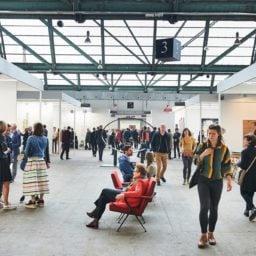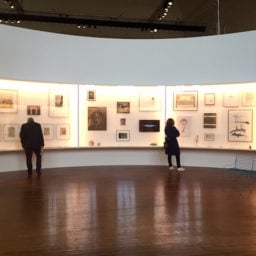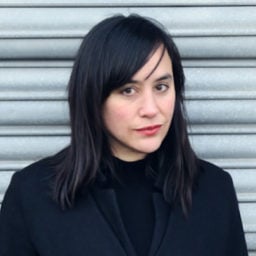On March 22, the world awoke to the tragic news of yet another terrorist attack on European soil. Two blasts in Brussels, the capital of the European Union, left more than 30 dead and over 300 injured. The city has also been the subject of several police raids in connection with the attacks that took place in Paris in November 2015.
With the 2016 edition of Art Brussels opening in two weeks—which coincides, moreover, with the inaugural edition of Independent Brussels—artnet News contacted Anne Vierstraete, managing director of Art Brussels, to discuss whether plans for the fair have changed as a result of the attacks, how the city is returning to normalcy, and why the art world has to carry on despite the threat of violence.
How is Brussels recovering from the attacks? What’s the general mood in the city?
The city was deeply saddened and shocked by the events of Tuesday 22 March. The authorities have outlined security standards for a level three threat in Brussels to ensure safe conditions for the population so that the heart of the city can return as quickly as possible to normal life. Museums are open, concerts are happening, people are eating at restaurants, going to the shopping areas, enjoy walking in the streets, and take trams, buses, and the metro. We are wary that the information in the media often gives a distorted view of events such as these, but we have experienced a growing sense of hope in the city.
The new location of the fair is near to Molenbeek and Schaerbeek, areas in Brussels that were in the media recently because of the raids against terrorists. Have any contingency plans been developed to ensure security at the fair?
We have taken extra steps and measures to ensure that high security is maintained this year, since the safety of participants and attendees is of utmost importance. We have sought out expert advice and continue to follow the guidelines of the authorities on maintaining security.
Have exhibitors or collectors expressed any concerns about attending the fair?
In today’s circumstances as Brussels airport is still not yet operating at full capacity [it reopened partially on April 3], we of course receive a number of questions addressing practical questions like flight organization and so on. Visitors mainly inquire about the security level at the fair and in town.
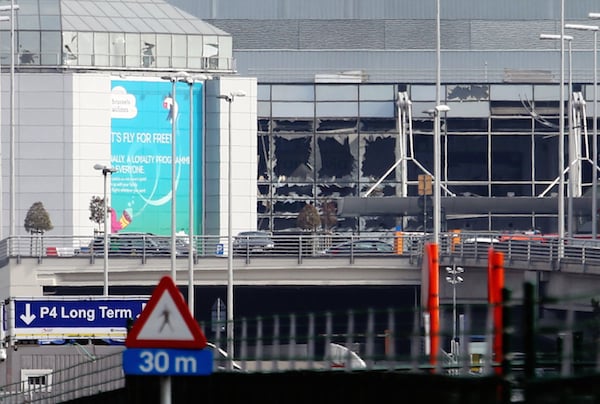
Bomb damage as passengers are evacuated from Zaventem Bruxelles International Airport on March 22, 2016.
Photo: Sylvain Lefevre/Getty Images.
Given the current threat level, would you ever consider cancelling the fair? What’s the position of Art Brussels in response to the attacks?
We were deeply saddened by the events of Tuesday 22 March and naturally our thoughts are with those who lost loved ones. We thank all those who have offered much appreciated words of support for the fair, the wider community, and the city of Brussels.
We are confident about the fair and very excited about this year’s program which we are happy to launch in our new location of Tour & Taxis. This move to a new venue opens a lot of possibilities and has allowed us to instigate many changes which will benefit the fair, not least of which the reduction in size by 50 galleries to a total of 141. This has enabled us to be more stringent in the selection process. Obviously, we constantly strive to improve the quality of the art on view; and we aim to renew, surprise and innovate, ensure good hospitality, and create good viewing conditions for art.
We are looking forward to the fair, and while we remain vigilant, our lives go on as normal. We do not feel threatened as these incidents, we have to remember, remain quite rare.
In the last five years Brussels has gained a fantastic reputation as an arts hub, gathering not only a solid network of galleries and collectors, but also a growing base of emerging artists. Do you think the recent developments might challenge that status?
Time will tell regarding the short, medium, and long term effects of recent events. I would be reluctant to prejudge attendance for the fair at this stage. Certainly looking at examples of other cities that have suffered similar events, such as Paris or London, there is naturally great shock and disruption, but at the same time the cultural life of a city does continue. It remains the case that Brussels is an extremely vibrant city.
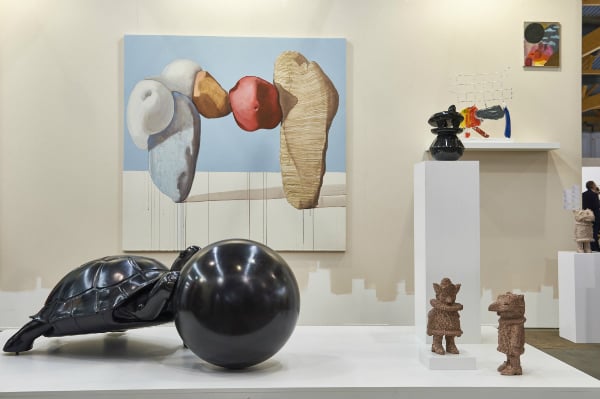
Sorry We’re Closed gallery’s booth at Art Brussels 2015.
Photo: David Noels, Courtesy Art Brussels.
Recent events like the premature closing of Paris Photo or the cancellation of the AKKA art fair following the Paris attacks show how terrorist violence around the world is directly affecting the art world. Lahore, for example, announced the launch of its first Biennale two weeks ago, and in the following weekend there was a horrible terror attack there. A week before the Brussels attacks, the director of the Goethe-Institut‘s branch in the Ivory Coast was among the 22 killed in a terrorist attack near Abidjan. How, in your opinion, can the art world deal with threats from terrorism?
After the terrorist attacks of November 13, 2015 in Paris, it became obvious that security measures had to be reconsidered in general, no matter what city in the world an event is planned in. The terrorist threat is, unfortunately, part of the world we live in, but it is not a new phenomenon. We also need to bear in mind that there has been a lot of fear mongering and sensationalist reporting on the events.
On a more positive note, what are you looking forward to in this year’s edition? What are the fair’s highlights for you?
The Art Brussels team is very confident of what we have to offer this year. In particular we are excited to be moving to our new space, Tour & Taxis. As Belgium’s leading fair, we continue to build on our profile and track record as one of “Europe’s foremost discovery fairs”, as stated recently in the New York Times. This year, we added a baseline: “From Discovery to Rediscovery.” We eliminated the YOUNG section in order to enlarge the DISCOVERY section from 14 to 30 galleries; we added REDISCOVERY, which focuses on under-estimated, overlooked, or unduly forgotten art made between 1917 and 1987; and we maintained PRIME, which brings together galleries presenting mid-career and established artists. As a result we have 3 clear, identifiable sections.
We also launch the OUT OF THE BOOTH project, which allows a number of galleries to present larger scale works in the form of a sculpture parcours inside the fair, with works by 12 leading international artists working in the medium of sculpture.
Our flagship project in the artistic program this year will be the exhibition “Cabinet d’Amis: The Accidental Collection of Jan Hoet,” curated by Katerina Gregos, artistic director of Art Brussels. Jan Hoet amassed a personal collection during his years working as a curator, with over 500 works in it, most modest in scale, and certainly not spectacular. Many artworks were gifts from artists, resulting in a collection joined not by design or intent, but almost by accident. Artists include Joseph Beuys, James Lee Byars, Marcel Broodthaers, Thierry De Cordier, Marlene Dumas, David Hammons, and Luc Tuymans, among many others.
This edition of the fair coincides with the arrival of Independent. What are your thoughts on that? Do you see Independent as a competitor, or rather as an addition that will complement the local scene?
When Independent first announced that it would be joining us in Brussels, I noted how it proves that our city has become an attractive international contemporary art community. There is a common precedent across the globe of satellite fairs popping up around larger ones once a scene is cemented. However in this case, the Brussels market has been solid for a long time and those in-the-know have been making the most of that at our fair for many years.
On a local level, in Belgium we have more collectors per capita than any other country in the world. We have an unrivaled proximity and connectivity with so many of the other European art capitals. Art Brussels was one of the first contemporary art fairs so we enjoy very long standing relationships with collectors, artists, curators, and museum directors from around the globe who respect our experience and curatorial approach, and continue to make this a priority in their calendars.
The fact that we receive more than 30,000 visitors, 30 percent of whom are from abroad, and have engaged in long-term VIP recruitment is of course something that Independent will profit from. It will also profit from the fact that so many other art events and partnerships are organized thanks to Art Brussels around the time of the fair. On the other hand, the two fairs are very different and have different lists of galleries, meaning that there is a complementary aspect that can only enrich the landscape. In fact, it is a situation of mutual reinforcement.
Katerina Gregos will leave her post as artistic director of the fair after this edition. What profile and skills are you looking for in her successor? What are the future targets and goals of Art Brussels?
We have not begun the process of looking for a successor for Katerina Gregos as of yet. As a specialist in contemporary art, Katerina has nourished the fair with her extensive knowledge, expertise, and international network. Her contribution has resulted in a very interesting evolution for Art Brussels, confirming and consolidating its specificity as a discovery fair which we will build on through the continuation of the fair’s strong curatorial profile over the coming years. At first thought, it is not our intention to reiterate a tandem combining a managing director and an artistic director but rather to collaborate on a different basis with several curators, among which Katerina Gregos might figure.





